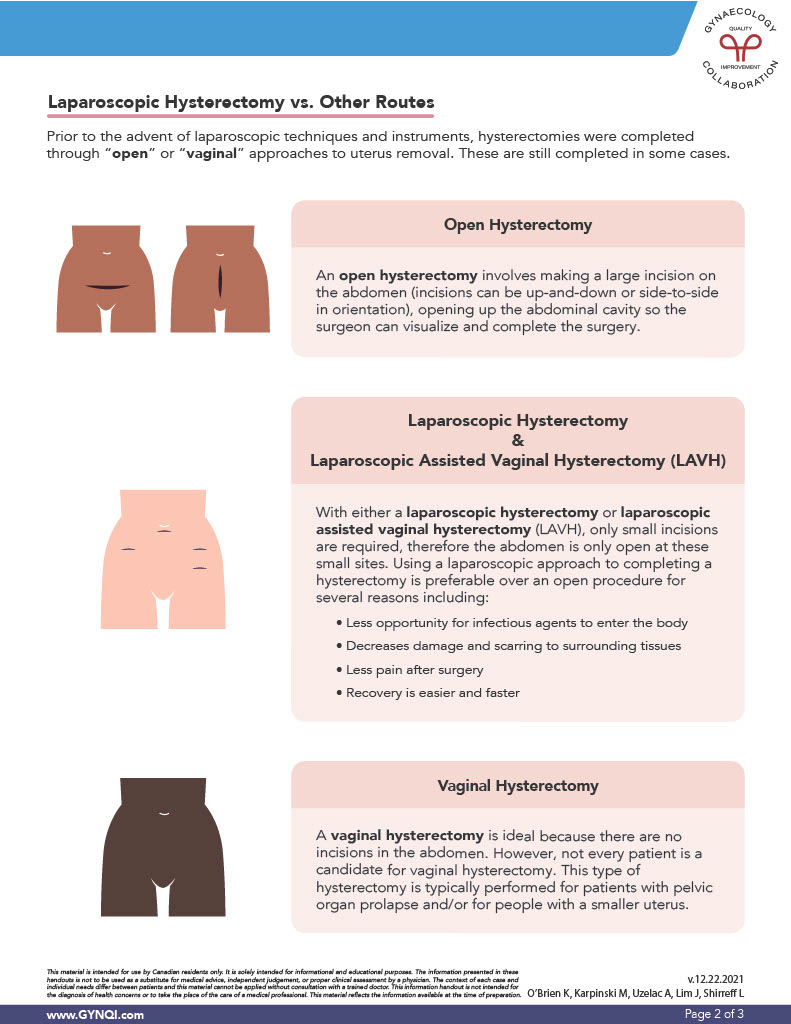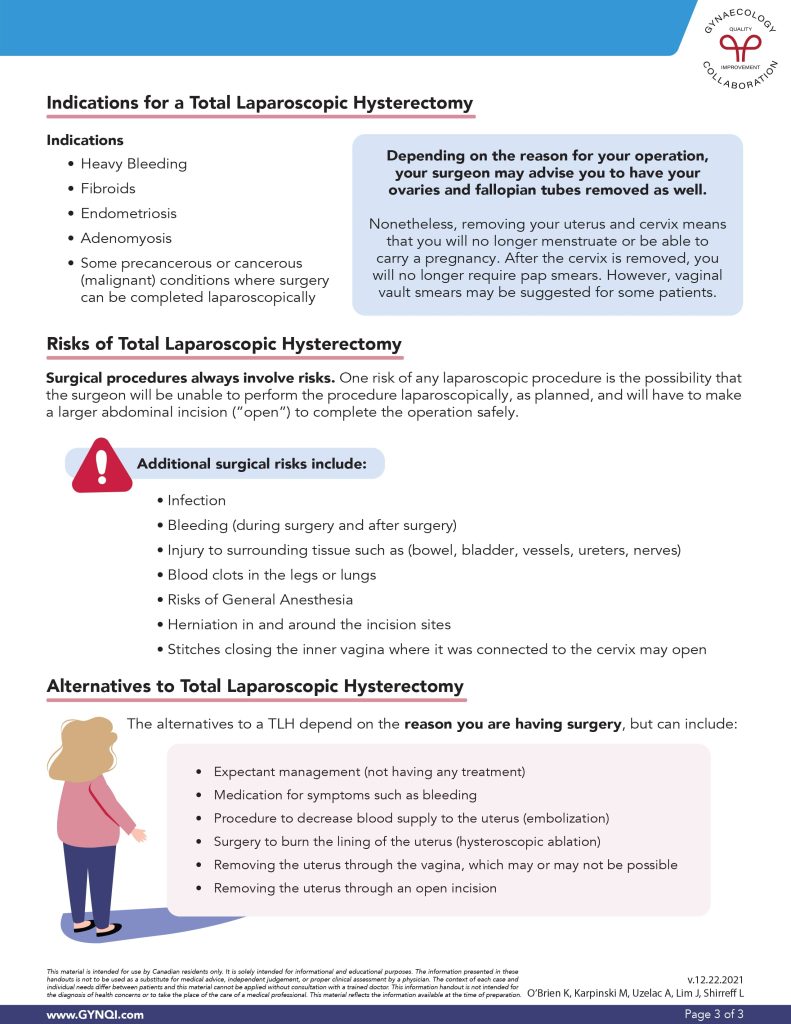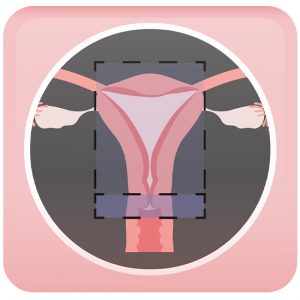


Table of Contents
- Summary
- What is a Total Laparoscopic Hysterectomy?
- Indications for a Total Laparoscopic Hysterectomy
- How is a Total Laparoscopic Hysterectomy Performed?
- Laparoscopic Hysterectomy vs. Other Routes
- Open Hysterectomy
- Laparoscopic Hysterectomy & Laparoscopic Assisted Vaginal Hysterectomy (LAVH)
- Vaginal Hysterectomy
- Risks of Total Laparoscopic Hysterectomy
- Alternatives to Total Laparoscopic Hysterectomy
- A Comprehensive Overview of Total Laparoscopic Hysterectomy
Summary:
- A Total Laparoscopic Hysterectomy (TLH) is a minimally invasive surgical procedure that removes the uterus and cervix through small abdominal incisions, utilizing specialized instruments and a camera for enhanced visualization during surgery.
- TLH may be indicated for various conditions, including heavy bleeding, fibroids, endometriosis, and certain precancerous or cancerous conditions, with the possibility of also removing the ovaries and fallopian tubes based on the individual case.
- Compared to traditional open or vaginal hysterectomies, TLH offers benefits such as reduced risk of infection, less tissue damage, decreased postoperative pain, and a quicker recovery time.
- While TLH is generally safe, it carries risks such as infection, bleeding, and potential injury to surrounding organs. Alternatives to TLH may include medication, embolization, hysteroscopic ablation, or traditional surgical methods depending on the patient’s specific needs.
A Total Laparoscopic Hysterectomy (TLH) is a surgical procedure that removes the uterus and cervix, often along with other gynecological structures, through small incisions in the abdomen. This minimally invasive approach utilizes specialized instruments and a camera, allowing the surgeon to perform the operation with precision while minimizing recovery time. TLH may be necessary for conditions such as heavy bleeding, fibroids, and endometriosis, and it provides several advantages over traditional methods, including reduced pain and scarring. Understanding the procedure and its indications can help patients make informed decisions about their reproductive health.
What is a Total Laparoscopic Hysterectomy?
A Total Laparoscopic Hysterectomy (TLH) is a surgical procedure during which the uterus and cervix (and potentially other gynaecologic structures) are removed.
The entire surgery is a laparoscopic procedure, which involves making small incisions, typically less than 1cm, on the abdomen. These small incisions are used to insert surgical instruments into the abdominal and pelvic cavity to perform the surgery. One of the instruments is a camera, which allows the surgeon to visualize the operating field.
Indications for a Total Laparoscopic Hysterectomy
A total laparoscopic hysterectomy may be required for:
- Heavy Bleeding
- Fibroids
- Endometriosis
- Adenomyosis
- Some precancerous or cancerous (malignant) conditions where surgery can be completed laparoscopically
Depending on the reason for your operation, your surgeon may advise you to have your ovaries and fallopian tubes removed as well.
Removing your uterus and cervix means that you will no longer menstruate or be able to carry a pregnancy. After the cervix is removed, you will no longer require pap smears. However, vaginal vault smears may be suggested for some patients.
How is a Total Laparoscopic Hysterectomy Performed?
A TLH is a minimally invasive surgical procedure that involves the removal of gynaecologic organs or structures through small incisions in the abdomen, utilizing specialized instruments and a camera to guide the surgeon throughout the operation.
The surgery typically follows these steps:
Step One: After you have received anesthesia, your abdomen is cleaned and the surgical field is prepared.
Step Two: Small incisions are made on the abdomen.
Step Three: Carbon dioxide is introduced into the abdomen in order to create the physical space necessary to perform the procedure, without having to make a large cut across the abdomen.
Step Four: Surgical instruments are inserted into the small incision sites. Your uterus and cervix (and/or ovaries and fallopian tubes depending on your particular procedure) will be taken out through one of the incisions your surgeon uses during the operation, or through the vagina.
Step Five: The surgical instruments are removed, your abdomen is deflated, and stitches are used to close the small incisions in your abdomen.
Laparoscopic Hysterectomy vs. Other Routes
Before the introduction of laparoscopic techniques and instruments, hysterectomies were performed using “open” or “vaginal” methods for uterus removal. While laparoscopic approaches are now more common, these traditional methods are still utilized in certain cases.
Open Hysterectomy
An open hysterectomy involves making a large incision on the abdomen (incisions can be up-and-down or side-to-side in orientation), opening up the abdominal cavity so the surgeon can visualize and complete the surgery.
Laparoscopic Hysterectomy & Laparoscopic Assisted Vaginal Hysterectomy (LAVH)
With either a laparoscopic hysterectomy or laparoscopic assisted vaginal hysterectomy (LAVH), only small incisions are required, therefore the abdomen is only open at these small sites.
Using a laparoscopic approach to completing a hysterectomy is preferable over an open procedure for several reasons including:
- Less opportunity for infectious agents to enter the body
- Decreases damage and scarring to surrounding tissues
- Less pain after surgery
- Recovery is easier and faster
Vaginal Hysterectomy
A vaginal hysterectomy is ideal because there are no incisions in the abdomen. However, not every patient is a candidate for a vaginal hysterectomy. This type of hysterectomy is typically performed for patients with pelvic organ prolapse and/or for people with a smaller uterus.
Read more: Types of Hysterectomy
Risks of Total Laparoscopic Hysterectomy
Surgical procedures always involve risks. One risk of any laparoscopic procedure is the possibility that the surgeon will be unable to perform the procedure laparoscopically, as planned, and will have to make a larger abdominal incision to complete the operation safely.
Additional surgical risks include:
- Infection
- Bleeding (during surgery and after surgery)
- Injury to surrounding tissue such as bowel, bladder, vessels, ureters and nerves
- Blood clots in the legs or lungs
- Risks of general anesthesia
- Herniation in and around the incision sites
- The stitches that close the inner vagina, where it was connected to the cervix, may become loose or open
Alternatives to Total Laparoscopic Hysterectomy
The alternatives to a TLH depend on the reason you are having surgery but can include:
- Expectation management (not having any treatment)
- Medication for symptoms such as bleeding
- Procedure to decrease blood supply to the uterus (embolization)
- Surgery to burn the lining of the uterus (hysteroscopic ablation)
- Removing the uterus through the vagina, which may or may not be possible
- Removing the uterus through an open incision
A Comprehensive Overview of Total Laparoscopic Hysterectomy
A TLH is a minimally invasive procedure that removes the uterus and cervix through small incisions, offering benefits like reduced pain and faster recovery compared to traditional methods. While suitable for conditions such as heavy bleeding and fibroids, TLH does carry risks, including complications from anesthesia. Alternative treatments may also be considered based on individual needs. Overall, a total laparoscopic hysterectomy provides an effective solution for various gynecological issues.



